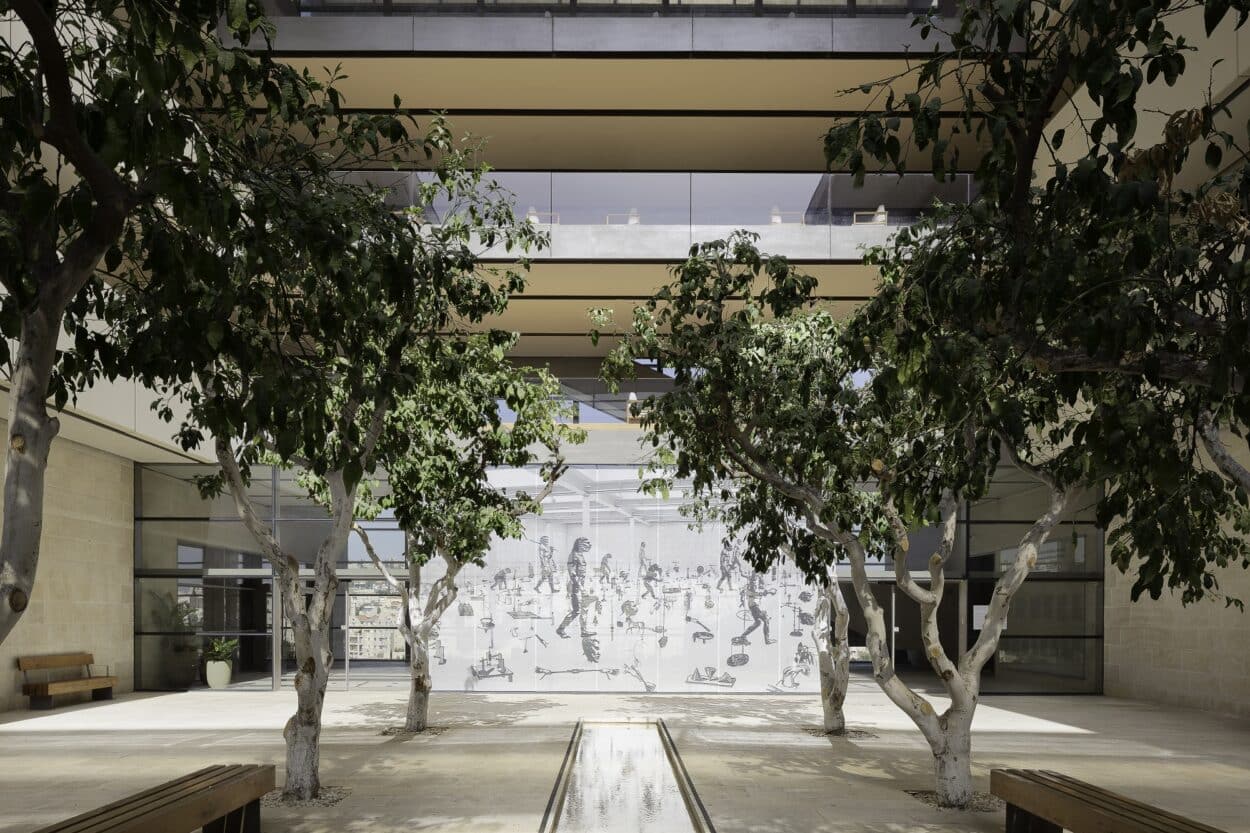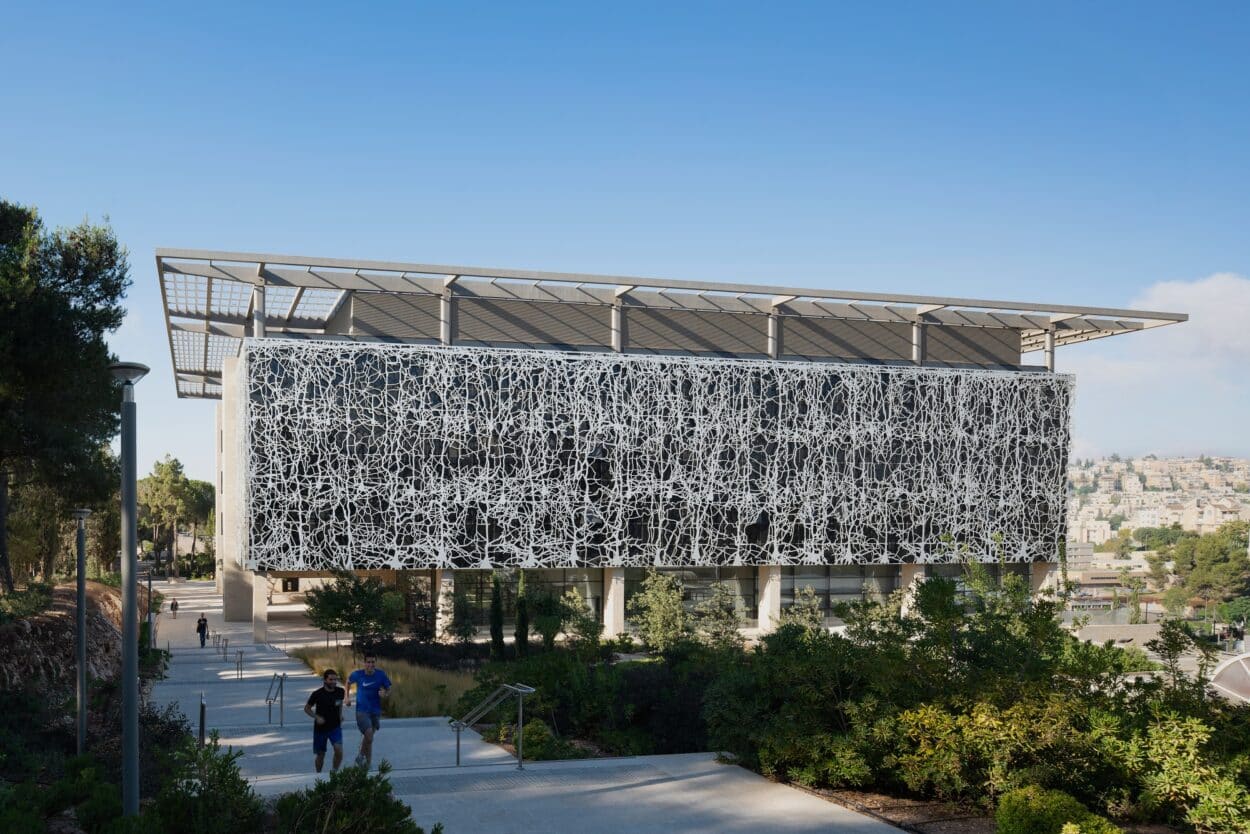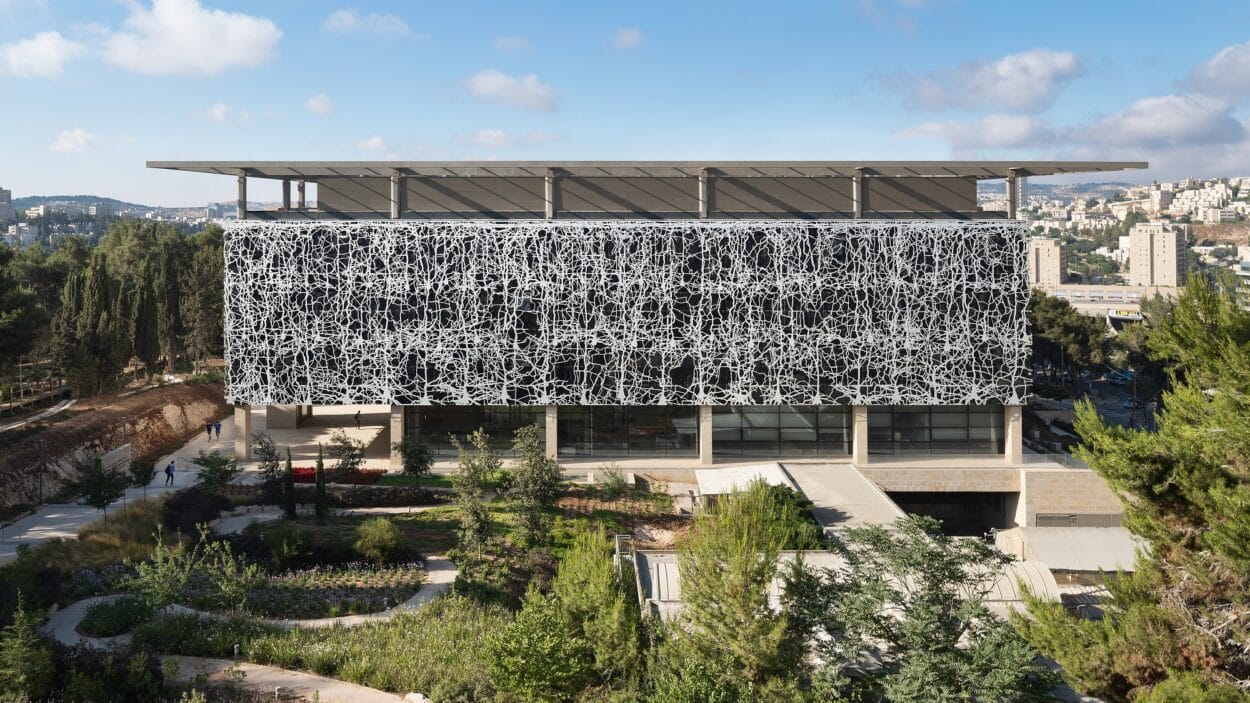Israel saw its Edmond and Lily Safra Center for Brain Sciences, designed by Foster + Partners, fully completed in 2020.
In 2010, the Hebrew University of Jerusalem commissioned Foster + Partners to design the university’s Edmond and Lily Safra Center for Brain Sciences, a pioneering research facility for the scientific exploration of the brain. The project covered an area of 15,724m² and was completed in 2020.
“The project for the Edmond and Lily Safra Center for Brain Sciences is much like a city in microcosm, with some of the same challenges: how do we best create a sense of community, share knowledge, bring people together, and support collective endeavors towards common goals?” Lord Norman Foster stated during the 2017 gala celebration and naming ceremony of the largest neuroscience center in Israel and one of the most ambitious in the world.
“The building works flexibly, accommodating a diverse range of requirements from customizable, individual workstations to a central courtyard that is the social heart, breaking the traditional mold of learning and making the process more collaborative. It is a celebration of the brain, and of the vital work that is carried out by the researchers here,” he continued.
The Hebrew University of Jerusalem dedicated its new interdisciplinary center for brain sciences in June 2017, before the official opening in October 2017, according to the university blog. However, the architectural project as a whole was completed in its entirety in 2020.



In collaboration with Yuval Baer Galit Shifman Nathan Architects, the building bridges together the university campus and city with social spaces and laboratory facilities that were designed to attract exceptional scientists as well as to generate interest within the community for the center’s research activities.
With two parallel wings around a central courtyard, the upper levels house twenty-eight highly flexible laboratories linked by social hubs, which are conceived to encourage interaction and the exchange of ideas between students and staff, according to the project description by Foster + Partners.
On the ground floor, there are teaching facilities, a 200-seat auditorium, a library, café and a publically accessible gallery for the display of brain art. The courtyard unites these different functions, establishes new circulation routes through the campus and draws the greenery of the surrounding landscape into the building. Planted with citrus trees and with a water feature along its length, the courtyard forms a quiet, reflective space and a cool microclimate, which can be further mediated by a retractable ETFE roof.

The project of building the Edmond and Lily Safra Center for Brain Sciences had a progressive environmental strategy, for which passive techniques to naturally reduce energy use were implemented. Local materials, such as Jerusalem stone, were utilized where possible, and the building is orientated east-west to reduce solar gain. The upper three levels are shaded by a perforated aluminum screen, with a pattern derived from the neurological brain structure. Further passive cooling of the building is provided by translucent ETFE canopies to the west and east, which form distinctive markers for the main entrances.
“Understanding the enigma of the brain is the most challenging endeavor of the 21st century and research in this area is vital to the quality of life for millions of people. This is one of the most innovative projects of its kind at an Israeli university, with several laboratory complexes that are highly flexible to anticipate and accommodate future change, arranged around an open central courtyard that is at the heart of the scheme,” Spencer de Grey, Head of Design, Foster + Partners, said in a statement.










